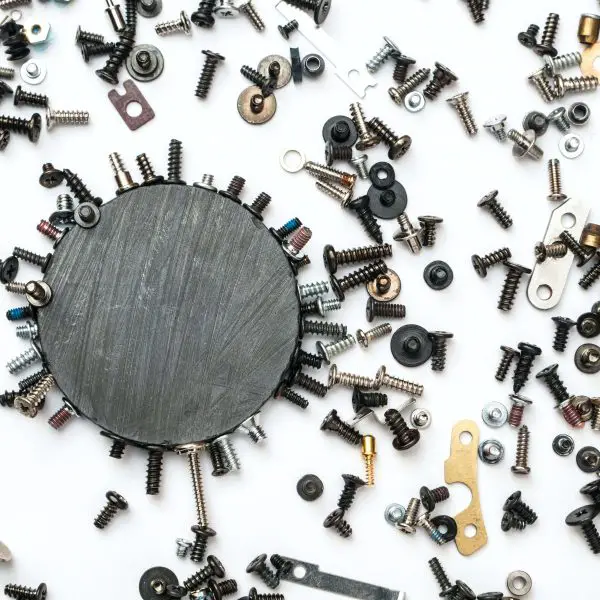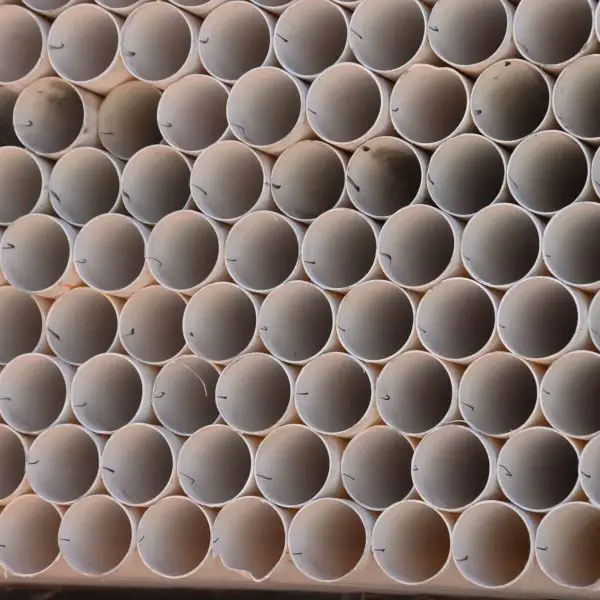PVA glue is one of the most common adhesives used today. Its properties make it a number 1 choice for numerous craft projects and woodworking.
But what is actually PVA glue? Read on to find out all about the PVA glue, including how it’s made, its properties, and what’s it used for.
What Is PVA Glue?
PVA or polyvinyl acetate is a type of synthetic polymer that belongs to the polyvinyl ester family. It’s a type of thermoplastic that is most commonly known as white glue, school glue, Elmer’s glue, and carpenters glue.
This glue was found in 1912 by German chemist Fritz Klatte. Since then, it has been used throughout the 20th century, mostly for bookbinding and carpentry.
Today, most of our kids use this adhesive at schools and for crafting projects. Its non-toxic properties made it very suitable for children’s use.
It’s one of the best-selling adhesives and is also used in plastic, the automotive industry, and heavy-duty vehicles.
What Are The Properties Of PVA Glue?
PVA has many unique properties that made it so popular. We will go through them in this section of the article.
Dries Clear

PVA glues dry clear, and that’s why they are so popular for crafts. They are colorless and don’t leave any ugly color residue behind.
They are great for joining parts that are visible and creates clean-looking bonds.
Non-Toxic
One of the main reasons PVA glue is the number 1 school glue in the world is because of its non-toxic properties. They are low VOC, which means that they are free of toxic fumes and environmentally friendly.
Cyanoacrylate glues or superglues are known to produce fumes that can make you nauseated. This isn’t the case with PVA glues and with them, and no allergic reactions occur. This makes them great for indoor use, even if the room is not well ventilated.
Strong Bonding
The most important feature of glue is its bonding ability. If it can’t bond, what’s it good for?
The bonds that PVA glue makes are super-strong. It’s known to make bonds stronger than the wood itself. That’s why it is a popular choice in woodworking.
It has great tensile strength and can withstand a lot of structural pressure.
Viscosity

The PVA glue comes in all types of viscosities. We have low viscosity school PVA adhesive that is liquid-like and tends to spill easily.
Then we have carpenter and wood glues that need to have higher viscosity for precision in the application and higher curing times. Wood PVA glue usually comes in a medium or high viscosity.
There are many options here, and they mainly depend on the type of application and project that the adhesive is used for.
Water Resistance
One of the main cons of PVA adhesives is their low moisture resistance. They are not suited for any projects that are in danger of moisture and should be avoided for such applications.
There are several models of PVA glue that combine cement and polyvinyl acetate to enhance the water-resistant properties of the glue. These glues are expensive though, and there are better options for those applications such as polyurethane glues.
Curing
The curing time for a standard PVA glue is pretty long. It takes up to 24 hours for the glue to cure and for successful adhesion to take place, the parts must be clamped.
This adhesive cures by water evaporation or water absorption into a substance. This means that the hot and dry climate will decrease and speed up the curing time.
The setting time of this glue usually varies. Some manufacturers try to prolong the settling time for their glues to provide more open work time. This is usually the case with wood adhesives that have setting times of up to 60 minutes!
What’s It Used For?

As we previously mentioned, the PVA glue is widely used for crafts, paper, and woodworking.
There are many craft PVA adhesives on the market that do an excellent job of bonding different kinds of materials. These adhesives are usually cheap and create average strength bonds. They are also widely used for bookbinding and different projects involving paper.
Woodworking and carpentry PVA adhesives are known as more heavy-duty or high-grade PVA glues. The PVA glue is known to make bonds stronger than the wood and is, therefore, a perfect type of glue for all kinds of wood projects.
Most of these glues are not moisture-resistant, although there are some excellent Titebond models that are waterproof. These kinds of models are usually more expensive and are us for wood flooring such as laminate that requires water-resistant properties.
Carpenter PVA glues are similar to wood glues. The difference is usually in color since the carpenter glues tend to have a yellowish tint that matches great with wood.
Should I Use PVA Glue?
You’ve most likely already used some type of PVA glue in your life. They are so common and can be found in nearly any store around the country.
We recommend them if you do a lot of crafting DIY projects since it’s cheap but sturdy and gets the job done.
The Elmer’s E305 is an excellent model for all types of DIY crafts. It works with a lot of different materials and holds the bonds excellently. It’s easily washable with hot water and soap. The color is crystal clear, and the glue is non-toxic without fumes!
Overall, Elmer’s glue is a perfect PVA glue for crafts that you can Check on Amazon here!
- WASHABLE CLEAR GLUE
Last update on 2025-01-29 / Affiliate links / Images from Amazon Product Advertising API
If you’re into bookbinding and paper projects, PVA glue is a must. The Books by Hand PVA adhesive is an ideal choice for those types of projects.
It’s acid-free and PH natural, so it won’t damage the paper. It is easily reversible but doesn’t become brittle after time. The drying color is clear, and the adhesive cures really fast!
If you want to make your bookbinding and paper projects look professional, clean, and long-lasting, use this glue! Buy it on Amazon here!
Last update on 2025-01-29 / Affiliate links / Images from Amazon Product Advertising API
If you’re into woodworking, PVA glues are an ideal choice. The glue we would highly recommend is the Titebond 3.
This glue makes phenomenally strong bonds that last for years! It has all the advantages of PVA adhesive but is waterproof as well! You can easily use it for flooring reinforcement, furniture, or any type of carpentry work, indoors or outdoors!
It’s super easy to apply and doesn’t drip. After application, you need to clamp the parts for one hour, and that’s it! The parts glued will be inseparable!
If you’re a serious woodworker, this is the glue for you! It’s truly a professional-grade wood glue that makes the results stellar! Check it out on Amazon here!
- Superior waterproof wood glue is ideal for exterior and interior woodworking! One hour clamp time! Cleans up with water.
Last update on 2025-01-29 / Affiliate links / Images from Amazon Product Advertising API
Conclusion
PVA adhesives are the adhesives most of us used but aren’t aware of their power.
They are not only used for children crafting but for many serious projects that require strong and reliable bonds.
If you’re a serious crafter or woodworker, you will benefit from PVA’s as they are inexpensive, strong, and durable.










